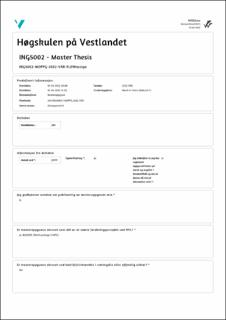| dc.description.abstract | Over the past decades, domestic fire has dominated the fatal fire statistics in Norway, and at-risk groups are overrepresented in those fatalities. Western Norway University of Applied Science (HVL) research project BUILDER (Building design for At-risk groups) seeks to improve fire safety for at-risk groups by achieving an understanding of the different challenges & suggesting relevant safety solutions.
As a part of the work package (WP-5) of that project, this study is conducted with the cooperation of RISE FR (FRIC project 4.3) to find a reliable smoke detection system solution for the at-risk group, especially for residents with drug and psychiatric disorders (ROP). GAP analysis for the housing for ROP residents and several interviews conducted under the BUILDER project with Fire Service personnel, people at-risk group, their relatives, and care services indicates that; the technical solutions now provided within smoke detection, and fire protection at the dwellings of the residents with substance abuse and mental disorder does not overcome the challenges and ultimately not satisfying the particular requirements to ensure fire safety.
GAP analysis for the housing for ROP residents shows a smoke detector in such dwellings shall overcome the following challenges,
• The smoke detectors or alarms shall be least visible and accessible to the user.
• The smoke detectors or alarms must preferably be able to be tested without having to enter the ROP home and have minimal maintenance requirements.
• A smoke detector must not be sensitive to cigarette smoke and other types of pollution (narcotic fume/excessive cooking smoke). The smoke detectors shall be relatively early and accurate to sense fire/smoke hazards.
• The detection system shall assist in sensible activation of the gas-based extinguishing agent.
As an aspiration detection system, it overcomes the first two challenges mentioned by its detection principle and installation setup, but its usability in such dwellings shall be assessed. Thus, eight different smoldering and flaming fire scenarios were designed based on different conditions (such as fire locations, apartment ventilation status, indoor openings, amount of fuel, and the spread of fire and smoke). A total of 33 test was conducted in an apartment in the Hall of Flame of HVL to find the reliability, sensitivity, and performance of the aspiration detection system compared to multi-sensor and photoelectric detectors. | en_US |

